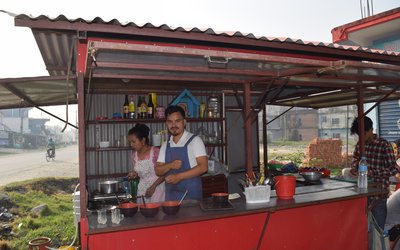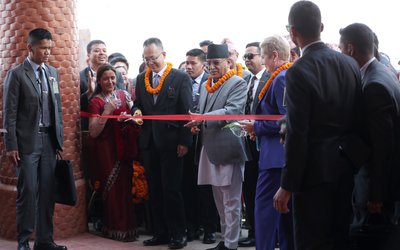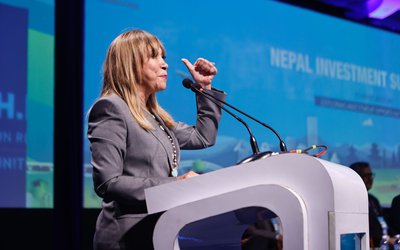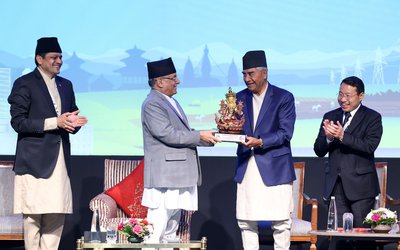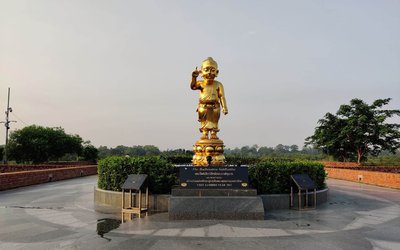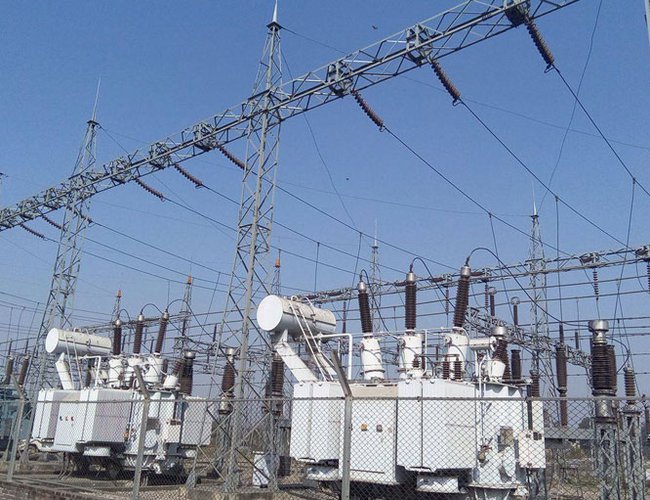
The direction of wind has changed these days as it often changes when a season turns over. This time, people are whispering in each other’s ears some new things which they had almost forgotten. Unfortunately, time and again, the whisper I am hearing goes around the fear of power cuts in the country. More understandable word to the people of Nepal may be used as loadshedding.
Nepal had long hours of load shedding in the past. Experience of the past is enough to them; the people know how traumatic and harrowing it can be in their daily life. Here I remember Leon Brown who said, ‘History repeats itself endlessly for those who are unwilling to learn from the past.” Do we fall under that category which Leon Brown visualized?
A surprising reality is that Nepalese people forget a lesson as fast as they learn from the past. A country which faced the loadshedding for almost half of the day has not started any reservoir hydropower projects in the country yet except the one with just 140 MW capacity under construction in its central region. Now that India has granted approval only for 554 MW of exchange-based power export to Nepal for three months from April to June of the ongoing year with its restriction to solar-hours only, it has become the talk of the town for the fear of repeating the scary history. Till 31st March, this approval remained to be 650 MW and 54 MW from India’s Power Exchange for India-Nepal 400 kV Muzaffarpur-Dhalkebar and 132 kV Tanakpur-Mahendranagar transmission lines respectively. As per the Procedures of India’s Designated Authority, maximum time period of one year is allowed at a time from the date of approval in case of trading in Indian power exchanges. Nontheless, India’s Guidelines associated with cross border power trade states that Government of India reserves the right to import/export electricity from/to neighbouring countries for reason of larger policy interests.
By and large, in addition to 70 million kilowatt-hours (units) of energy Nepal is entitled to receive on a continuous basis annually, free of cost, from the date of the entry into force of Nepal-India Mahakali Treaty in lieu of the eastern afflux bund of the Tanakpur Barrage, constructed by India at Jimuwa in the far western region, Nepal can receive Indian power under three modes of import: Under the old, historic mechanism of Nepal-India Power Exchange Committee (PEC) through various links connecting Nepal with the bordering states of India, from the Indian Power Exchanges through bidding and bilateral power purchase agreements with Indian entities. Currently, there are no such bilateral PPAs signed with the Indian entities for importing power to Nepal probably for the reason of high pricing of electricity. But Nepal may explore this option also by blending thermal and solar power to lower the price. As such, meeting the entire domestic demand of electricity will be tough, but not impossible despite some hardship to industries.
We live in an era marked by global warming, climate change, energy transition, etc. However, energy security is appearing as a threat to Nepal despite the reality that the percentage use of electricity in the country is still minimal vis-à-vis total energy consumption in different forms. On one hand, we need to gradually reduce non-electricity-based energy uses, thereby fostering energy transition, so that our own green energy would spread to the best extent possible all over the country. On the other hand, we should zero in on the target of increased per capita electricity consumption, too. Nepal’s immense water resources, a nature-blessed treasure, can be turned into hydropower for its socio-economic upliftment, but Nepal’s track record reveals a bleak and gloomy picture that the country is at around 3,000 MW in terms of total installed capacity, including some negligible thermal and solar, in 113 years of its hydropower development’s history. The installed capacity merely comprises a tiny portion for the contribution of storage hydropower projects -Kulekhani I, II and III – 106 MW in total.
As per the data of Nepal Electricity Authority, the only power procurer as a vertically integrated entity in the country, it has signed power purchase agreements for about 9,500 MW as of the first half of March, 2024, and the combined capacity for Run-of-River (ROR), Peaking Run-of-River (PROR) and Storage hydropower projects corresponds to 6,396 MW, 2,758 MW and 140 MW respectively. The resulting ROR-avalanche has buried the prospects of energy security of Nepal under the contrasting scenario of power surplus in wet season and power deficit in dry season.
In the present context, on top of the reduced power supply, both in terms of quantum and hours, from India, Nepal is hamstrung in this April-onward dry season by reduced domestic generation from its hydropower projects more than ever. As such, one cannot absolutely dismiss the risk of some power cuts in the country, but the system operator, to reduce the intensity of disruption, is left with some few options available within our own system like the use of stored water in Kulekhani reservoir, operation of PROR plants for peaking energy and drawl of some high-price and take-and-pay power from Bihar and Uttar Pradesh under the PEC mechanism.
To overcome this seasonal shortfall of power for future, solar power integration is a mid-term solution for Nepal, at least for energy shortage during the solar hours of the day, whereas non-solar hours may undergo seeking support from operation of peaking pondage and reservoir plants. It also offers a modest hedge against the country’s dependency on power import from India during the solar hours. In this regard, Nepal Electricity Authority (NEA) needs a steadfast commitment to the implementation of its recent and visionary Board decision for scaling up nationwide solar power integration into the national grid, thereby providing a significant boost to it as a policy turn amid the nation’s hydro-everywhere environment.
Since the grid-connected solar capacity of the country has reached only about 107 MW contributed by both NEA and the private sector, the capacity, after the recent move and also having considered some already-embarked efforts under the PPAs signed for about 175 MW, will rise to about 1,000 MW in the timeframe of 24 months. Of course, it does not mean that solar option is going to deliver a rollercoaster ride to the country seeking energy security, but it brings solace to a country in power distress and to the national utility, NEA, in price benefits over the costlier, external energy sources, besides tending to help diurnal supply adequacy in system operation.
With farsightedness, Nepal at large must be prepared for a stable and sustainable landscape of energy security for self-reliance. Although it may resonate something with an emotional content on behalf of the nation, it should not prompt any suspicions towards the increased need of cross border power trade, adequate grid connectivity and bilateral energy cooperation with India and the remaining part of South Asia at present and in future.
The development of dam-based hydropower projects will have multiple benefits like hydropower, irrigation, water supply, flood control and navigation. Among them, flood control and irrigation benefits will be important to lower riparian countries because of the regulated flows they receive. But the prospects of downstream benefits could even be sometimes contentious to siphon off decision-makers’ attention from storage hydropower projects in Nepal owing to the fears of possible ultra-patriotic protests linking the dam construction with its downstream benefits not being negotiated. In principle, counteracting these notions is not necessary and bringing more benefits to one’s own country is what every nationalist is desirous of as a commonality of national interest. But it’s related to the transboundary river governance between the countries sharing the rivers and there are many pertinent and valid concerns which require a meticulous examination and mutual understanding. It calls for permanent collaboration and everything has its own pros and cons which need open discussions at the right time. Indeed, in some cases, it becomes a huge headache to the lower riparian countries with respect to different concerns such as changes in water availability and quality, dam safety and water-related hazards when huge dams are unilaterally built by upstream countries.
By and large, river-based treaties cause issues and concerns – backlashes or criticism– in either riparian countries despite the best efforts to avoid them during the agreement or treaty. We need not go far to observe this situation outside South Asia. India and Pakistan signed the Indus Water Treaty in 1960 providing a framework for irrigation and hydropower development, around ten months later than when Nepal and India signed the Gandak Agreement. The Treaty was hailed even at the international level; it was negotiated on the same principles as the UN Convention and, furthermore, the World Bank was involved in doing this. In lower riparian Pakistan, the Treaty is still considered as a great sell-out, a cowardly act and an unpatriotic move. Likewise, in upper riparian India, the then Prime minister Jawaharlal Nehru was blamed for buying peace by giving away India’s water and not receiving adequate compensation for water resources. Both countries have been entangled in disputes now regarding the riparian use of water. Further, India as the lower riparian country has been revolving around the grievances concerning the building of Chinese dams upstream on the Brahmaputra.
In case of Nepal, we have three treaties/agreements on water resources in existence: the Kosi Agreement, the Gandak Agreement and the Mahakali Treaty. When the issue of sharing downstream benefits arises, we don’t have such mechanisms or procedures agreed between India and Nepal so far. Moreover, a pressing question besieges us whether we can delay the construction of storage projects in Nepal till the deal, which bears uncertainty, is clinched with India. Of course, we have no time to wait because we need energy security and economic prosperity through it and this is so urgent that climate change may constrict the nature-blessed largesse in future.
Some ultra-patriotists of Nepal are even selling the propaganda of applying international experiences like Columbia River Treaty (1964) between USA and Canada and the Treaty on the Lesotho Highlands Water Project (1986) between lower riparian South Africa and upper riparian Lesotho. If Nepal can, that’s really great and we all will be celebrating the moment. However, nobody concerned requested the attention of parliament for requiring to agree with India on equitable sharing of benefits of our transboundary rivers before ratifying the next treaty. No voices were heard that the earlier river-based agreements needed to be amended first as per the international practices and then only Mahakali Treaty could be considered for signing. Finally, we all know that the issue could not receive attention of the country even when Mahakali Treaty was ratified in 1996 by the parliament of Nepal by more than two-third majority. Even after that, both Water Resource Strategy (2002) and National Water Plan (2005) of Nepal envisioned the strategy of resolving riparian issues between neighbouring nations and achieving the expected benefits from treaties and multipurpose projects by 2017. Without any progress towards it yet, we are bound to reckon that it’s easy to say but difficult to do.
We must emphasize cooperation on water resources and power sector with neighbouring countries by placing national interest at the centre. There are ways to accomplish it in congenial atmosphere through dialogues at the levels of bureaucrats, diplomats and politicians. After all, Nepal must adjust its priorities to confront energy insecurity by starting construction of large-scale storage hydropower projects in the country along with the continuity in developing ROR and PROR projects because it’s the time the sound of the wakeup call is spreading all around. It is obvious that the country continues to be distressed for years to come in absence of the sufficient hydro-storage capacity. The campaigns for storage hydro projects in the country should continue, undeterred. Simultaneously, the country needs to advance the deep reforms that the power sector has long needed, especially in broader privatization, corporatization and value-chain liberalization.
Adhikari is an Energy Specialist and the former Deputy Managing Director of Nepal Electricity Authority. He can be reached at prabaladhikary@gmail.com.







